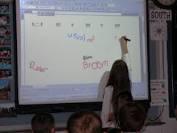As a teacher, you are normally defined as someone who teaches in a classroom; some will move on to become administrators.The vast majority of teachers will always be in the classroom, but sadly, many leave, opting for professional jobs that will both pay more and offer greater benefit packages. Many gifted teachers are lost to education because of this, but what if there was a way that the love of teaching could be combined with something that offers a creative challenge as well as more pay? Meet the teacherpreneur!
The teacherpreneur merges the image of the innovative classroom teacher with the risk-taking and entrepreneurial leadership that we commonly associate with those who create their own place in the professional world. This is an exciting change in the educational world, as this allows those highly motivated and creative teachers an opportunity to help their schools perform better, while developing methods and approaches that help other teachers bring out the best in their students.
School districts around the country are slowly realizing the potential there is in hiring or designating a teacher in this entrepreneurial role, and the benefits are proving to outweigh the cost. Federal grants are also making this unique roll possible, as teacherpreneurs are showing that they can make a difference in helping both students and teachers achieve higher goals.
Part of what makes teacherpreneurs unique is that they are still in the classroom—they don’t just talk about theory, they are creating innovative methods that they can share with other teachers in the school/district after having tested them in their own classrooms. They may teach on a part-time basis, using the rest of the day to formalize their ideas into something that can be shared.
Teacherpreneurs are, first and foremost, imaginative teachers. They have created a classroom culture of creativity and reflection. They think beyond the classroom in terms of how to make lessons meaningful, and in so doing, might see a need elsewhere in school that their innovation can address. I know that teachers of this caliber need to be creatively challenged and allowed to act on that creativity if they are going to be happy and remain in education. Forcing teachers to conform to a set standard can be stifling and even demoralizing.
Much has been written about how different students are with regards to how they learn coupled with their wide range of capabilities, and yet, this understanding often doesn’t extend to the faculty. Teachers were once students themselves, and who better to understand those differences than they? By allowing an atmosphere in which teachers are allowed to expand and grow, magic can happen in the classroom.
Teacherpreneurship is a topic I want to explore in the upcoming few months, as I consider it to be one of the most important and exciting changes to come into the educational world. This is a way to keep some great teachers in the system and allow their innovations and expertise to benefit students and faculty alike. Our rapidly changing society and technology demand new and fresh ways in teaching the academic basics.
Stay tuned!
















